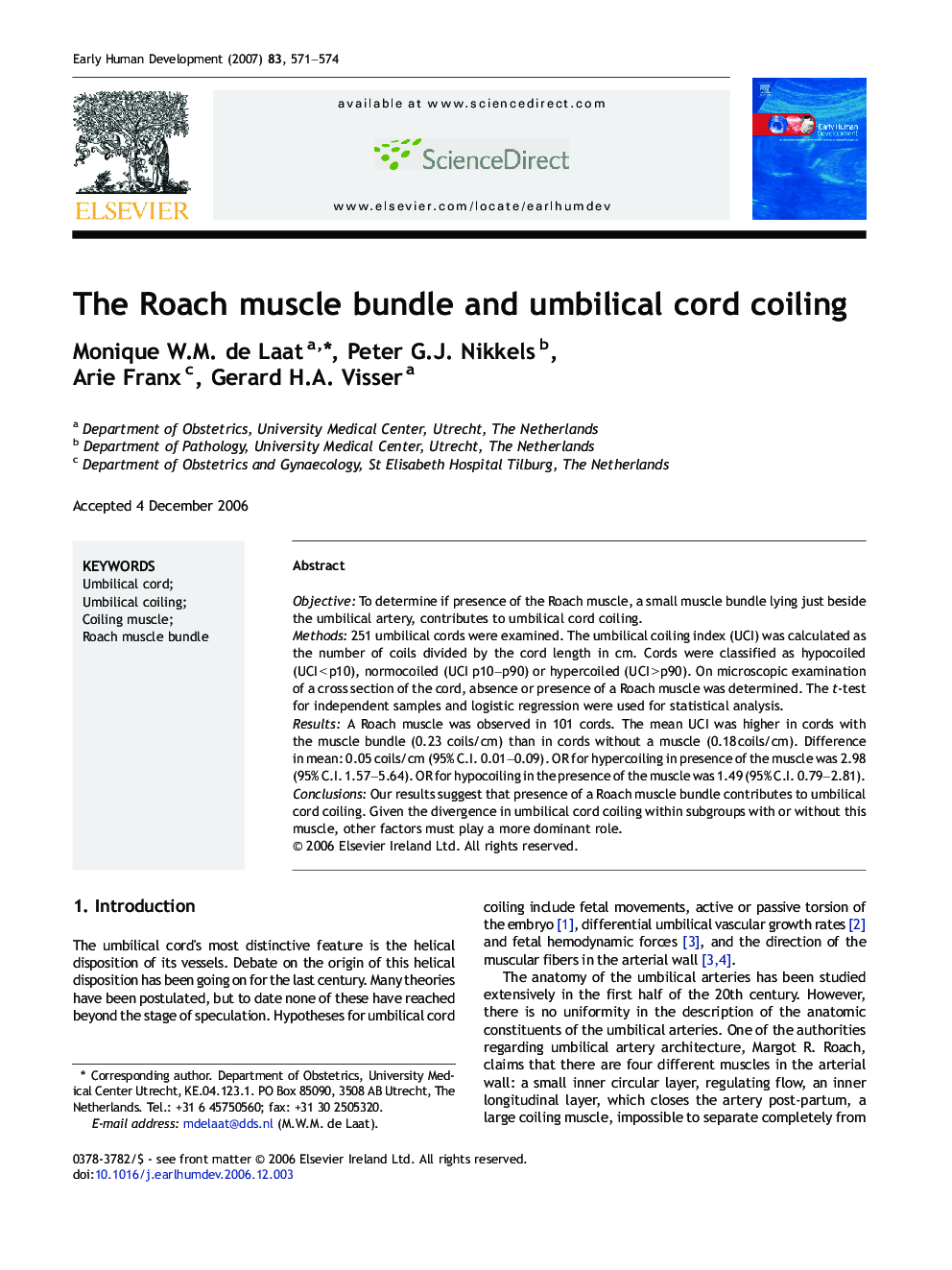| Article ID | Journal | Published Year | Pages | File Type |
|---|---|---|---|---|
| 3918597 | Early Human Development | 2007 | 4 Pages |
Objective:To determine if presence of the Roach muscle, a small muscle bundle lying just beside the umbilical artery, contributes to umbilical cord coiling.Methods:251 umbilical cords were examined. The umbilical coiling index (UCI) was calculated as the number of coils divided by the cord length in cm. Cords were classified as hypocoiled (UCI < p10), normocoiled (UCI p10–p90) or hypercoiled (UCI > p90). On microscopic examination of a cross section of the cord, absence or presence of a Roach muscle was determined. The t-test for independent samples and logistic regression were used for statistical analysis.Results:A Roach muscle was observed in 101 cords. The mean UCI was higher in cords with the muscle bundle (0.23 coils/cm) than in cords without a muscle (0.18 coils/cm). Difference in mean: 0.05 coils/cm (95% C.I. 0.01–0.09). OR for hypercoiling in presence of the muscle was 2.98 (95% C.I. 1.57–5.64). OR for hypocoiling in the presence of the muscle was 1.49 (95% C.I. 0.79–2.81).Conclusions:Our results suggest that presence of a Roach muscle bundle contributes to umbilical cord coiling. Given the divergence in umbilical cord coiling within subgroups with or without this muscle, other factors must play a more dominant role.
